A Guide To The Right Scientific Conduct Through The Wrong Examples!
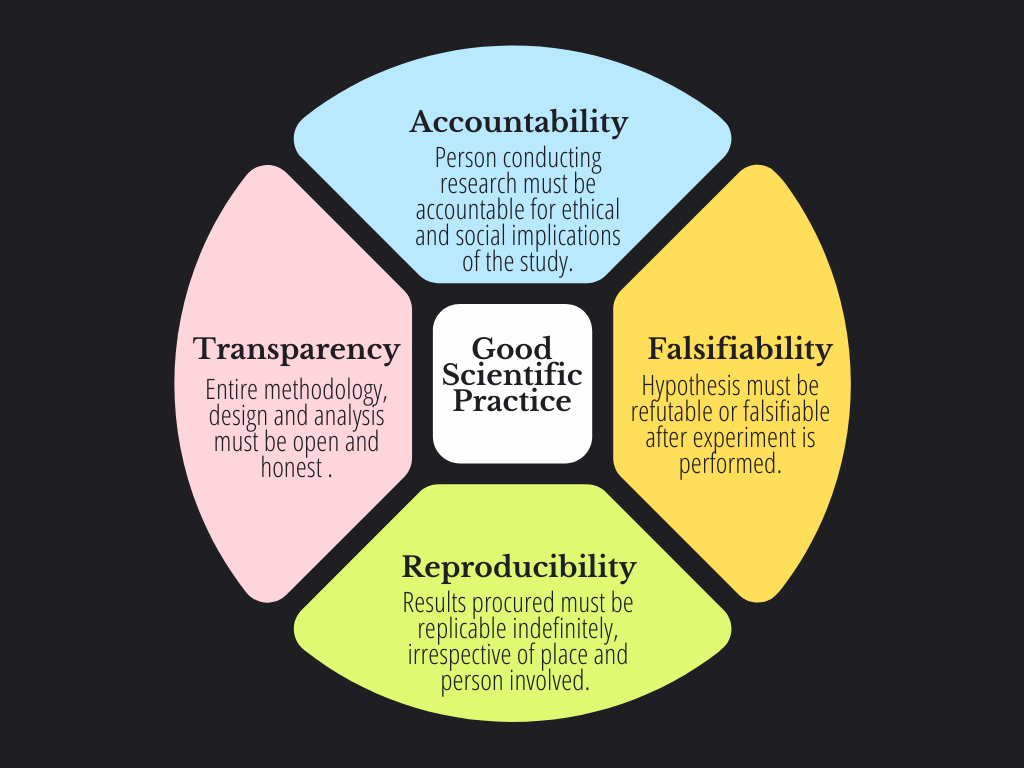
Take a good look at this infographic. Don’t rush, you’ll need this later.
Did you do it?
Good, now let’s begin.
28 FEBRUARY 1998.
A paper was published in the Lancet that sparked the idea that vaccines (specifically the MMR-Mumps, Measles and Rubella vaccine) cause autism in children. 12 children were essentially the “lab rats” for this experiment that set out to prove that administering the MMR vaccine led to the onset of behavioral symptoms in 8 of these 12 children within ~6.3 days of exposure.


MMR Vaccines were linked to regressive autism in children
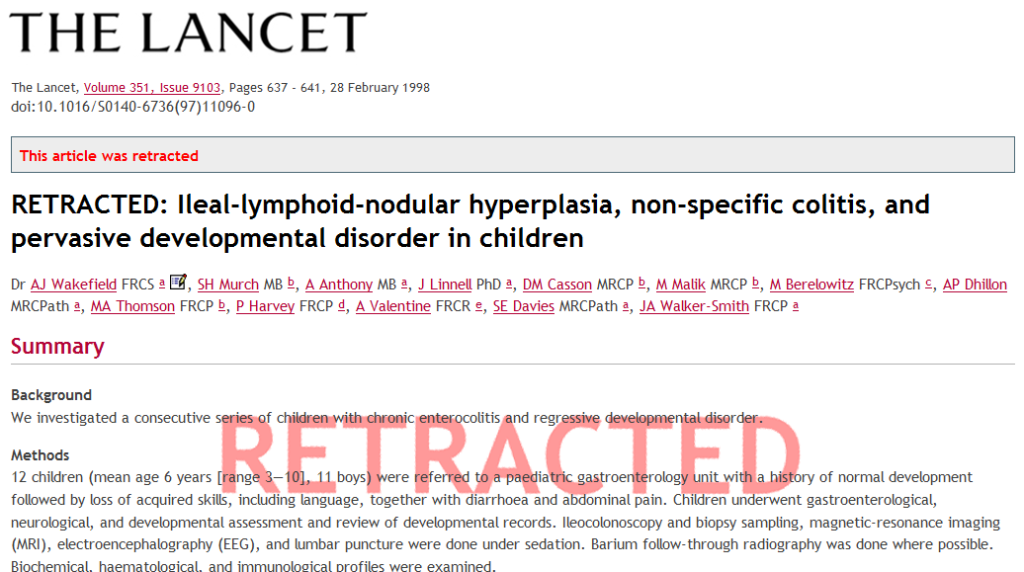
2 FEBRUARY 2010.
This paper was retracted by the Lancet after an extensive investigation that found the first author Andrew Wakefield and his colleague John Walker-Smith among 11 others guilty of fraud. The lead author’s name was striked off he medical register by the fitness to practice panel. They had incorporated children having what they called “bowel inflammation” and “regressive autism” and claimed that they had a syndrome even before starting the very case study series that would prove it’s existence. And the poor MMR vaccine was blamed.
This paper was retracted by the Lancet after an extensive investigation that found the first author Andrew Wakefield and his colleague John Walker-Smith among 11 others guilty of fraud. The lead author’s name was striked off he medical register by the fitness to practice panel. They had incorporated children having what they called “bowel inflammation” and “regressive autism” and claimed that they had a syndrome even before starting the very case study series that would prove it’s existence. And the poor MMR vaccine was blamed.
And this spark owes its existence to a cohort of dishonest, reckless and irresponsible scientists/doctors who resorted to unethical means and non-reproducible methods to prove an otherwise refutable theory.
. . .
29 JANUARY 2014
A female Japanese scientist Haruko Obokata published two papers in one of the top notch science journals – Nature – describing a novel physical method to convert a normal body cell into a stem cell that was capable of differentiating into any other cell type! It was indeed a Nobel Prize-worthy discovery.
Why was this significant?
Well, in 2006, another Japanese scientist called Shinya Yamanaka identified four genetic elements called transcription factors (Yamanaka factors) that were genetically crucial for reprogramming differentiated cells back into stem cells. These stem cells were “pluripotent” i.e., they could convert into any other cell type. In essence, Yamanaka factors induced pluripotency in cells and thus these stem cells were termed iPS-induced Pluripotent Stem cells. Shinya Yamanaka won the Nobel Prize for Physiology or Medicine for this unprecedented discovery. This widened the scope of an arena of research called Stem Cell Therapy which laid promise to treat a wide range of genetic and neurological diseases in the future. But this entire process involved a series of steps that required utmost care and precision to work, and that made it spectacular.
Going back to Haruko Obokata, she invented a ridiculously easy method to do the same, using mouse blood cells for her experiment. In a simplified form, all you had to do was immerse the body cells in an acid-bath containing a weak acid, like citric acid, for half an hour. Voila! Your pluripotent stem cells are ready!
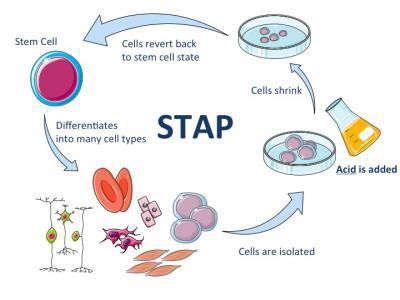
It seemed too good to be true. Surely, a Nobel Prize would be worth more than something that seemed to come out of a cookbook! And yet here she was, heading a laboratory in the famed Riken Centre for Developmental Biology, Japan publishing not one, but two papers on these STAP (Stimulus-Triggered Acquisition of Pluripotency) cells that essentially required a stimulus to turn into stem cells. No complex procedures, no special genetic factors, nothing. Suddenly it seemed like “Rome was not built in a day” had become a redundant adage.
Or did it?
2 JULY 2014
No, it didn’t. Obokata’s overnight rise to fame was short-lived. A few days following the publishing of her papers in Nature, allegatory comments started appearing on social media that there were several grave errors in her study. These allegations compelled Riken to undertake a serious investigation into the matter, because their credibility was at stake.
On 1 April 2014, they laid bare Obokata’s work for the world to see. She was guilty of scientific misconduct around two points that encompassed data fabrication, image manipulation, data falsification, plagiarism, production of irreproducible results and non-transparency. The most horrifying finding turned out to be that the origin of her beloved “STAP cells” that she claimed were reprogrammed mouse blood cells, could not be traced back to mice. They were in fact regular, frozen pluripotent stem cells that were thawed and misrepresented as Stap Cells.
The reports by the Research Paper Investigative Commitee at Riken can be found here and here. The summary of one of the reports states that:
Dr. Obokata’s actions and sloppy data management lead us to the conclusion that she sorely lacks, not only a sense of research ethics, but also integrity
and humility as a scientific researcher.
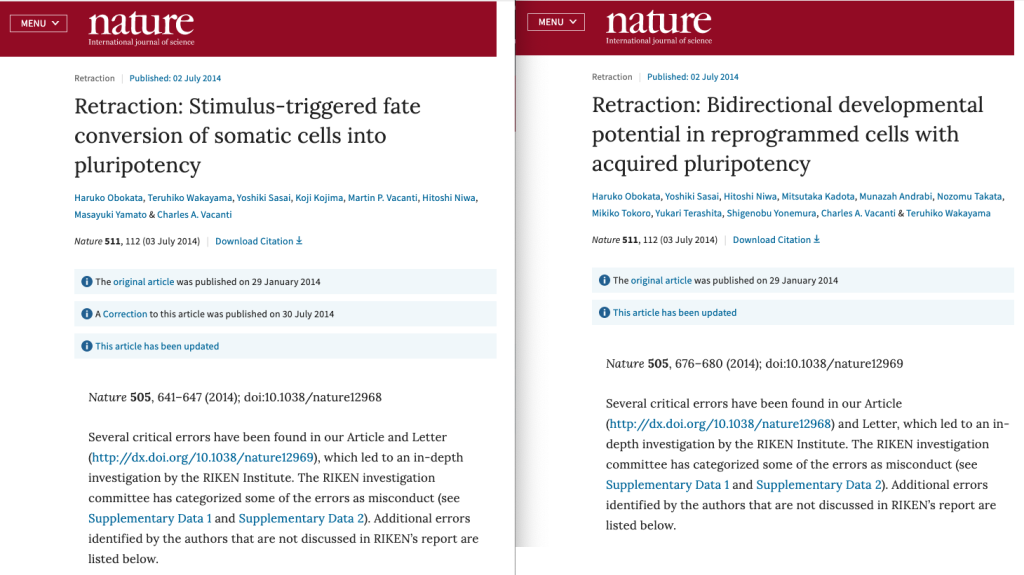
6 months later, on 2 July 2014, both her papers were retracted from Nature. Her supervisor, who was also one of the authors in the study committed suicide after a long period of depression in lieu of all the public humiliation.
His suicide note to Obokata said, “Be sure to reproduce Stap cells”.
. . .
MAY 2020
Paper publications as well as retractions have been seeing an all-time high now when the race to find a vaccine for Covid-19 is at its prime. The urgency to find a cure has rendered speed as the only factor to win this “viral race” (pun intended!), and other factors like scientific integrity, scientific conduct and scientific methodologies seems to have taken a back seat. However, this trend began raising eyebrows when two papers were retracted from prestigious journals-The Lancet and The New England Journal of Medicine (NEJM).
One was a paper, published in The Lancet on May 22, 2020. It raised safety concerns on the use of the anti-malarial drug Hydroxychloroquine (HCQ) as a cure for Covid-19. Advertised heavily by US President Donald Trump, this drug became a household name, especially in the States. This broad-range study gathered patient data from hospitals spanning six continents through a private healthcare analytics company based in Illinois called Surgisphere. The study concluded that HCQ didn’t benefit COVID-19 patients in any way when compared to a placebo. This brought several studies and clinical trials to a grinding halt and caused several independent researchers to raise questions about its credibility.
Parallely another paper was published in the New England Journal of Medicine on May 1, 2020. It stated that COVID-19 patients with a history of cardiovascular disease were not directly at a greater risk of death in-hospital. Thus it was safe to assume that blood pressure medications did not have any adverse effects on patients suffering from the novel coronavirus. Once again, they had procured their patient data from Surgisphere.
Several experts who were not involved in these studies raised questions about inconsistencies in the data. Everyone just had one question to the authors:
“From where did you source your data?!”
All fingers pointed at Surgisphere.
JUNE 2020
Surgisphere kept mum. It refused to cooperate for an audit that was requested by independent experts in the field and did not participate in the private peer-review process because that would involve messing with the privacy of patients. The raw data was not allowed to be accessed by all the authors. Due to this there was no accountability for the data, nor was there any way to prove it’s authenticity. Due to absence of transparency, the authors were forced to request the journals to withdraw their papers.
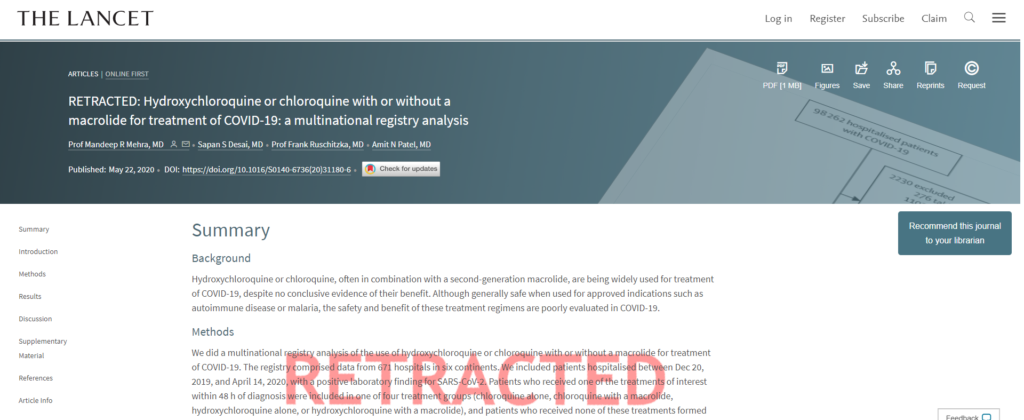
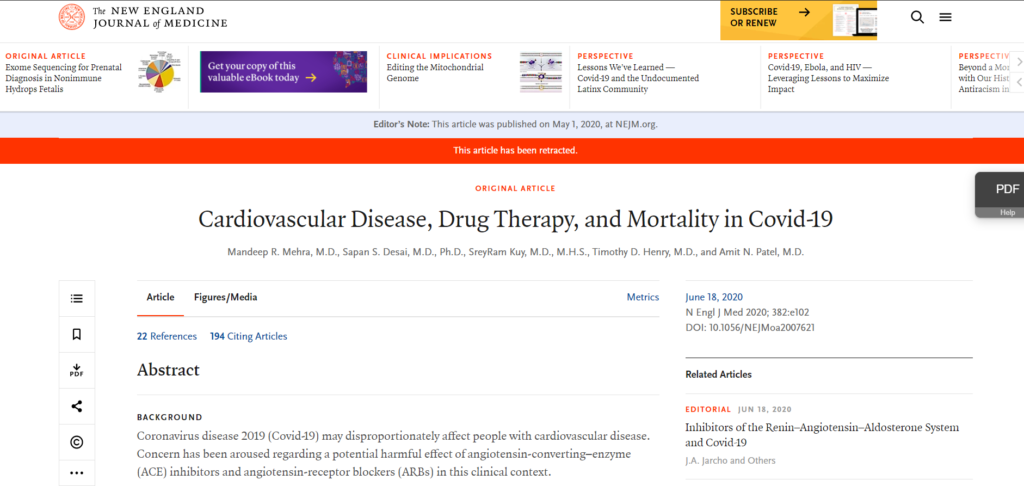
. . .
So well, that was a bunch of Scientific Scandals that took the world by storm, some due to their publication and some others due to their retraction.
Now let’s go back to the very first picture.

Accountability, Falsifiability, Transparency and Reproducibility.
Do you now understand what happens when even one of these pillars fall? The absence of any one of these leaves research integrity teetering on the edge. Any sort of fabrication, falsification or plagiarism falls under the dark pall of scientific misconduct and leads to grave consequences.
More often than not, we learn better by doing things the wrong way. But sometimes, this wrong way can turn out to be catastrophic to our cause. Haruko Obokata might have gone farther in her field had she not fallen prey to scientific hubris and tried to prove a futile point that led to drastic repercussions on her career and self-respect. For her supervisor, her ambition was the difference between life and death.
Paper retractions time and again remind us about the need to follow the right scientific methods (refer to our article on The Scientific Method of Nest-building to get an idea) and ensure good scientific conduct throughout the study, by upholding the four cornerstones of good scientific practice illustrated in the figure above. In addition, it provides a scope for scientific journals to secure the loopholes in their review protocols to prevent the possibility of such mishaps occurring in the future.
History has laid premise to several such mistakes that led to severe consequences. It is time we, as heir to the scientific community, learn from the blunders of our ancestors and pledge to create a safe and reliable future for science.
. . .
